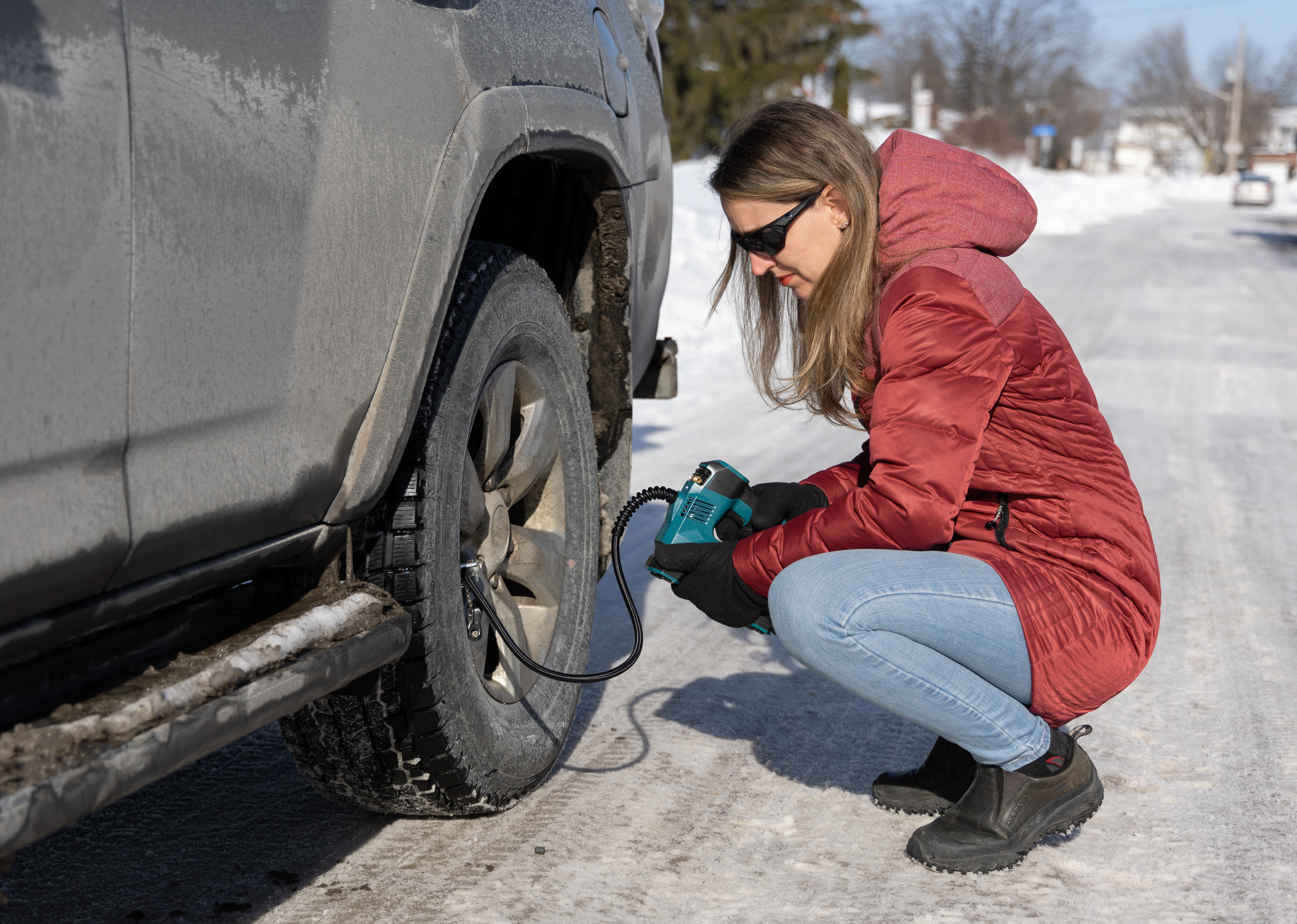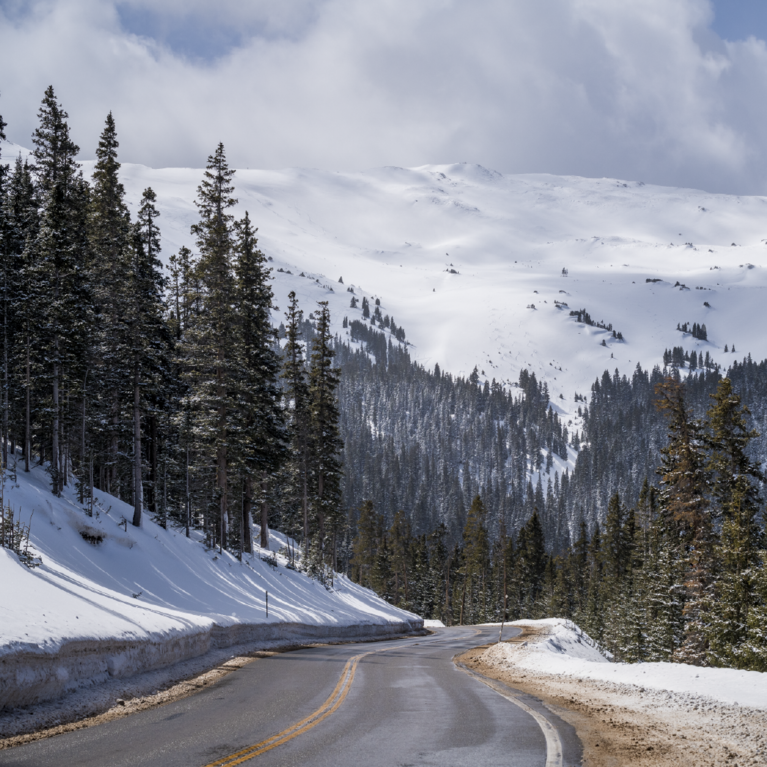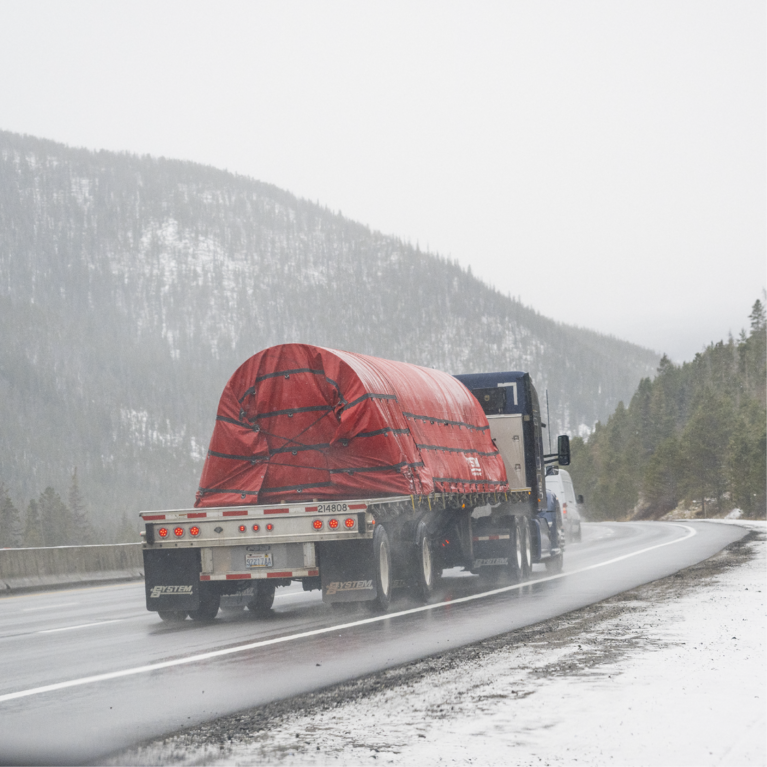Winter Ready in Colorado
Driving in Colorado winter weather can be dangerous if you're not prepared. Colorado State Troopers responded to 11,745 crashes last winter, with impacts ranging from property damage to death. Whether encountering fog, snow, or icy conditions, the best way to minimize risk is to reduce your speed.
Is your vehicle ready for winter? Getting your vehicle “Winter Ready” can go a long way to preventing a crash or mechanical failure. It’s also important to know how to adjust your driving based on the weather conditions.


Five Ways to Get Winter Ready
- Maintain Your Tires – tire quality is paramount. All vehicles in Colorado are required to have adequate traction. Colorado defines acceptable tires as those with a tread depth of at least 3/16-inch, and which are rated for either “All weather” or “Mud and Snow.” Remember, as the air temperature drops, tire pressure can decrease. Keep an eye on your tire pressure and fill them to reduce the risk of punctures, blowouts and reduced handling.
- Maintain Your Battery – cold weather can strain it, so keep batteries fully charged. When possible, park in a warm or protected location (e.g., a garage or a sheltered spot), use a battery blanket, and avoid short trips that don’t allow enough time for your battery to charge fully.
- Check Your Fluids – every fluid in your vehicle will help it perform better during colder months. Change your oil and filters, flush and refill coolant/antifreeze, and refill your windshield wiper fluid.
- Visibility is Key - don’t wait until the first snowfall to get a snowbrush and scraper for your car. And now is the time to put on a fresh set of windshield wipers.
- Pack an Emergency Kit – getting caught in a snowstorm doesn’t just happen when traveling in the mountains. Whether sitting in a line after a crash, waiting because a road is closed due to weather conditions, or sliding off and getting stuck, your kit may save your life. Be sure to have a first-aid kit, shovel, thermal blanket and snacks.
Cold Weather Driving Tips
- Clear snow and ice for complete visibility.
- Decrease speed for the conditions.
- Do not use cruise control.
- Increase distance from all vehicles, including snowplows. Let plows go first.
- Avoid sudden braking or acceleration.
- Avoid a false sense of security - 4WD and AWD help with traction, but not with stopping or turning.
- Emphasize giving yourself “extra time” before hitting the road.

Navigating Mountain Roadways
Whether you are driving Interstate 70 through the winding canyons, navigating ski traffic or visiting the beautiful mountain terrain Colorado has to offer, make sure you're prepared to navigate these challenging roadways.
If you are following the winding path of the canyons or navigating sharp curves through high mountain passes, certain precautions are necessary. The shadows cast by the mountain walls pose a hazard, as the ice on the roadway melts more slowly without direct sunlight. It is important to follow the posted speed limits, have tire chains ready if you don't have proper winter tires, and allow yourself ample time to stop if needed.
Many mountain passes have steep grades, no guardrails or shoulders during specific stretches, animal crossings, and other hazards along the way. Conditions can change fast, from clear pavement on the plains to blowing snow and limited traction at elevation. If you’re traveling, plan extra time for stops, especially near popular ski areas and for potential road closures due to inclement weather.



Chain Law Information
Colorado's Chain Law is not just for large commercial vehicles. All vehicles need to be prepared with adequate tires and equipment for winter travel. Chain Law and safe tire requirements can be put into effect at any time for all types of vehicles. Learn more about Colorado Chain Law.
Know the Road Conditions
Before leaving for a trip, check the weather and plan your route accordingly. Stay informed with COtrip.org about current driving conditions, weather forecasts and other information that affects winter travels. Consider alternate routes and travel times, and allow extra time for delays to ensure a safe and stress-free journey.